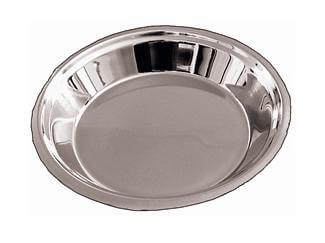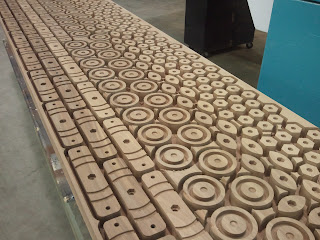It’s sad that it is cheaper to feed your family at McDonalds than to provide a balanced meal for your family..
For example – if all they can afford is crap, and they don’t have the resources to grow their own they could be at a real disadvantage.
These are two of the comments made on Homesteader’s Supply Facebook page. Balanced meals don’t have to be expensive, or complicated. They can be much healthier than fast food. We can leave fast food behind and eat inexpensively.
It takes a bit of time to prepare and cook a good meal. The time can be spent teaching children to cook, a skill that’s being lost in a large portion of our youngsters. Food for thought: In the big picture of life, is it more important to have children in three after school and extra curricular programs that keep us too busy to cook and eat well than it is to teach our kids to cook? Let’s get off the road a little and into the kitchen more, where we can share some quality family time.

9″ stainless steel pie pan.
Here is a recipe for quiche to help us get started. Quiche is great for breakfast, lunch or dinner. For a grab-and-go breakfast use muffin tins instead of the pie plate, no crust needed. I browsed the online flyer a Hannaford, a grocery store chain, and the paper flyer from Food Mart to get prices.
Broccoli & Cheese Quiche
One dozen eggs
1/2 pound chopped broccoli
1/2 pound grated cheese
One pie crust
1 tsp salt
1 tsp pepper
1 tsp Italian seasoning
Scramble the eggs and add seasonings. Use seasonings you like. A quarter-teaspoon of crushed red pepper adds zing without heat. Garlic powder is also good. If the broccoli is frozen you should thaw, drain and pat it dry. Mix everything together and pour into the crust-lined pie plate.
Serving sizes are out of proportion these days. One serving of meat is three to four ounces. That’s the size of a deck of play cards (not Uno or other large game cards). Keep the number of servings you need for the entire day in mind. You have three meals and possibly a snack to get all that you need to be healthy and fit.
Variations: spinach, onion, mushrooms, artichoke, dandelion greens. What’s available in the garden?
Bake at 350* for 45 minutes.
To cut down on costs:
- use brick cheese that you grate yourself
- chopped broccoli is less expensive than pieces when using frozen
- use broccoli stems, not just the tops
Eight servings. $7.20 total.
Eggs – $3.00
1 pie crust – $1.15
Cheese – $2.20
Chopped broccoli – .60 cents
Seasoning – .25 cents
Serving cost: .90 cents.
Eating healthy, homemade meals probably means dietary changes if you’re used to swinging through the drive through on a regular basis. Change can be difficult and fun. Try to avoid overwhelming everyone. You might cause a revolt. Keep it fun.






